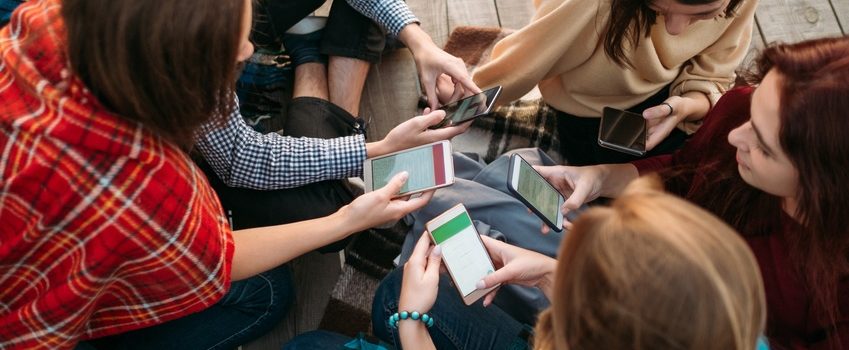How to Get Started Using Social Media to Strengthen a Learning Community
Social media can quickly transform a collection of students into a dynamic learning community. It provides a digital platform for students and teachers to engage in conversations and build relationships. Social media has several educational benefits, even for classes that meet in person. Using a digital platform becomes essential in situations when students have limited personal interaction, such as distance learning.
Social Media Increases Participation Levels
Students often contribute more to informal channels than they would in a formal academic setting. The asynchronous feature allows participants the ability to engage at their own pace. Deep-thinkers appreciate the ability to mull over concepts and make connections to other disciplines. English language learners and those who process language slowly often find it easier to follow a written conversation than an oral discussion.
Social Media Ignites Interest
Students connect with other learning communities interested in similar topics, regardless of location and time zones. The heterogeneous grouping infuses various perspectives into a conversation. Your students may explore subjects with renewed vigor with the influx of new ideas. Students’ interest also gets fueled by instantaneous peer feedback to their posts.
Social Media Facilitates Integrating Critical Thinking into your Curriculum
As social media increasingly becomes a way to disseminate information, teachers are focusing more attention on teaching students how to evaluate the credibility of information sources. Teaching digital citizenship includes providing students with guidelines for posting links and explaining how context is vital to understanding content.
Social Media Encourages Students to Challenge the Status Quo
The anonymity of social media helps students question ideas they might be too timid to ask in person. Taking academic risks leads to more profound thinking, and therefore academic growth. However, that feeling of anonymity is a double-edged sword. Without care, conversations on social media often devolve into name-calling and hurt feelings. If you decide to use social media, you must be willing to monitor your students’ communications. Establishing a culture of respect and intellectual honesty is easier to do on platforms that allow administrators to preview comments before students post them.
Choosing the Right Platform is Important
With so many benefits, you may wonder why teachers don’t always incorporate social media into their instruction more often. Teachers share valid concerns about privacy, accessibility, price, and the time they will need to devote to monitoring their students’ activities.
One of the first steps towards making social media work for your class is selecting the appropriate platform for your educational goals. Think beyond popular platforms of Facebook, Instagram, TikTok, Pinterest, and Snapchat. Many families concerned about privacy and a lack of parental controls will likely object to their children having an account on those popular platforms.
Luckily, you have options beyond these common platforms. Many are safer and more educational than the ones listed above. Most are free or low-cost.
This social media list will get you started on platforms that will help you take advantage of the benefits of social media and avoid many of the risks. Common Sense Education evaluated various platforms with the educator in mind.
- Twitter aids in quick communication. The iconic hashtag helps people sort by topic. Adding GroupTweet | Group Twitter Accounts Made Easy helps teachers safely manage the conversations. Target Ages: 13 and up; Cost: Twitter is free. Group Tweet starts at $7.99 per month for the administrator.
- Twiducate – Social Networking & Media For Schools: Education 2.0 offers students the opportunity to try micro-blogging similar to Twitter. Target Ages: 6-18; Cost: Free
- The Wonderment blends the ideas of content creation and crowdsourcing to help students explore and get involved in projects. Target Ages: 6-18; Cost: Free
- DIY.org – Online Courses and Fun Projects for Kids blend the successful approaches of scouting organizations and YouTube. Kids see videos with instructions on how to do projects. They get to share their accomplishments and earn badges.Target Ages: 7-14; Cost: $15-25 per month
- Project Noah: Citizen Science Platform for Wildlife helps nature lovers of any age discover, share, and identify wildlife. Target Ages: 7 and up; Cost: Free
- Youth Voices encourages teens to express themselves through writing and podcasts. Topics range from personal narratives to academic musings. The site’s organization makes it easy to read and comment on the content of peers. Target Ages: 13-18; Cost: Free
- Goodreads | Meet your next favorite book helps teens and adults engage with literature. They can follow friends, participate in literary conversations, and get suggestions for new books that they might like. Target Ages: 13 and up; Cost: Free
If you didn’t find the right solution for your needs, try asking your colleagues for more suggestions. You may find a wealth of information in professional groups from your own social media.
No matter what platform you choose, you will want to get parental consent. Explain to families why you are choosing to incorporate social media as part of your instructional model. You can use many of the benefits outlined in this article. Describe the safety and privacy features of the particular platform and your role in monitoring the conversations. Detail your expectations for responsible digital citizenship and how (or if) you will use social media participation as part of your grading.

